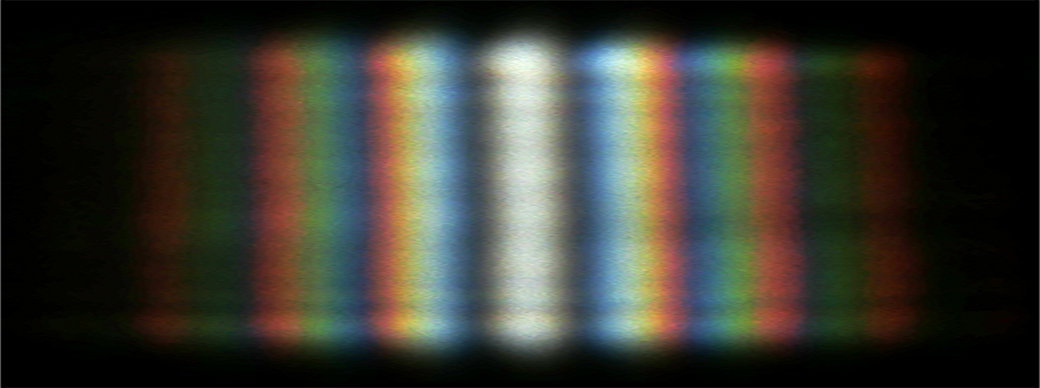Thomas Young's Double Slit Experiment
 Interference patterns created by sunlight. (Berdnikov)
Interference patterns created by sunlight. (Berdnikov)
Thomas Young was born in 1773 in Somerset England to a Quaker family, and from a young age he was a prodigy. He fluently spoke Greek and Latin by the age of 14 and was also familiar with French, German, Italian, Hebrew, Aramaic, Syriac, Samaritan, Arabic, Persian, Amharic and Turkish. By the time he was 23 he had completed a his medical doctorate, and in 1801, at the age of 28, he was made professor of natural philosophy at the Royal Institution.
One of the debates going on around the time Young was appointed to the Royal Institution surrounded the nature of light. Isaac Newton, in his 1704 publication "Optiks: or, A Treatise of the Reflexions, Refractions, Inflexions and Colours of Light," popularized the idea that light was made up of tiny particles known as "corpuscules" (a hypothesis first suggested by Descarte in 1637). Meanwhile other scientists such as Dutch physicist Christiaan Huygens had proposed that light was actually made up of waves traveling in an ether. Newton's ideas had been fairly widely accepted since he was known for his genius, but that did not prevent Thomas Young from identifying issues with his philosophy. One such problem in the corpuscular hypothesis of light is that it doesn't explain refraction. refraction is a phenomenon that is only known to happen with waves. Newton had basically created an entirely new set of laws to explain why corpuscules would refract when changing mediums. Additionally, at the barrier between air and water, some light is reflected, and some is refracted, which is not easily explained if light is made up of discrete particles. On the other hand, however, by the late 18th and early 19th centuries sound was known to be a wave which experienced phenomenon such as refraction, but light and sound didn't always display the same properties. For example, sound would experience diffraction and travel around corners and through a pipe that was repeatedly bent, whereas light would not.
When Thomas Young was reading Optiks, it occured to him that one of the phenomenon that sound, as a wave, experienced was interference. The interference of waves occurs because when two waves of the same amplitude are traveling in the same medium, where a peak lines up with a peak or a trough lines up with a trough, the waves "interfere" constructively so the troughs get deeper and the peaks get higher, but when a peak lines up with a trough, they cancel each other out. This is known as destructive interference. In sound, interference between two audio sources creates beats. By 1800, Young began considering that perhaps light, if it were a wave, would demonstrate interference properties as well.
In May of 1801, Thomas devised an experiment to test his predictions. He covered a window in his house with a piece of paper and then put a small hole in the paper to allow light to pass through. He then used a thin card to split the light beam and observed what happened on the opposite wall. As he suspected, the light created an interference pattern (like the one seen above) ultimately verifying his theory that light is in fact a wave.
He later refined the experiment so that light was passing through two slits in the paper to generate the same results, and his findings were published in his November 1801 paper, "On the Theory of Light and Color." In his subsequent presentation to the Royal Society he provided his findings, along with examples using sound and water waves that demonstrated analogous interference patterns to those he was seeing with the light. This experiment and his findings, ultimately opened the door to the field of studies that would one day be known as quantum mechanics, while variations on his original experiment would be answering questions all the way into the 21st century.